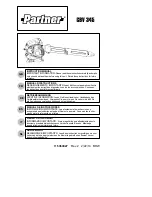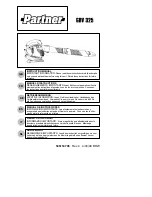
17
5.4.4 AIR FILTER RESTRICTION GAUGE
The air filter restriction gauge included with your Qube is a direct reading gauge designed specifically for
use with dry air filters with atmospheric intake. As the filter deteriorates, air inflow will decrease creating
increased vacuum between the air filter and the blower. This vacuum is monitored by the air filter restriction
gauge, which gives a visual indication of the filter condition.
This feature is particularly useful for blowers operated in dusty environments. Unlike traditional pop-up or
latch-up type indicators, the air filter restriction gauge gives constant readout in meaningful terms of the
changing condition of your filter.
5.4.5 DISCHARGE PRESSURE GAUGE
The discharge pressure gauge included with your Qube is a diaphragm actuated, direct reading 2 inch
(50 mm) dial gauge. The mechanism is enclosed in a steel case that is coated to resist corrosion. A
polycarbonate, break-resistant lens and stainless steel bezel protect the gauge from exterior damage.
Accuracy and protection from moderate overpressure is assured by a unique, unitized diaphragm chamber.
A built-in pulsation dampener stabilizes the indicating needle and is removable for cleaning.
5.4.6 CHECK VALVE
Your Qube includes a discharge swing type check valve designed for minimum pressure loss and positive
closure on shutdown. The Qube check valve is a low-loss, swing type check valve. Its ‘T’ pattern design
allows for easy maintenance if necessary.
Swing check valves can fail to operate if not properly maintained. Frequently check for damaged, loose,
or missing parts. With power off and locked out, hand operate valve to insure springs are in good working
order and the flapper seats properly without restriction. Repair or replace valve if problems are encountered.
The valve can be removed by removing four screws from sheet metal shroud. Then remove four bolts from
check valve housing assembly.
CAUTION
NEVER inspect the valve with your Qube running. This can result in severe
damage or injury.
NOTE
We recommend that you inspect the valve monthly by removing the
inspection cap and examining the internal workings. Check for wear and
hang-up of the flapper mechanism. If flapper drags across body or is
restricted in movement, remove valve from service and repair. Apply anti-
seize compound to entire mating surface between cap and body to aid
removal during subsequent inspections.
NOTE
Orientation of the check valve is critical. Inspection cap must be located
at the valve top, and the valve direction arrow must be pointed toward the
Qube discharge pipe connection and away from the blower. Pointing the
check valve direction arrow toward the blower will starve the blower inlet
and cause immediate failure.
















































